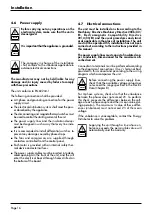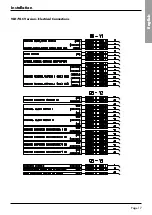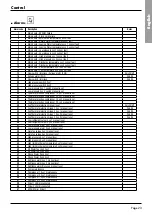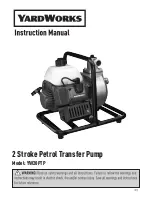
Page 11
English
Transport, Lifting and Positioning
3 TRANSPORT, LIFTING AND
POSITIONING
Refrigerators are supplied assembled (apart from
standard antivibrating rubber supports, that will be
installed on site). The equipment are full of refrigerant
and oil, in the quantity required for a proper opera-
tion.
3.1 Inspection
When the unit is delivered, it is recommended to check
it carefully and to identify any damage occurred dur-
ing transportation. The goods are shipped ex-factory,
at the buyer’s risk. Check that the delivery includes all
the components listed in the order.
In case of damage, note it down on the carrier’s deliv-
ery note and issue a claim according to the instructions
provided in the delivery note.
In the presence of any serious damage, that does not
affect the surface only, it is recommended to inform
manufacturer immediately.
Please note that manufacturer may not be held liable
for any damage to the equipment during transporta-
tion, even though the carrier has been appointed by
the factory.
3.2 Lifting
The unit must be lifted by using the hooks inserted into
the relevant eyebolts (see the figure).
WARNING
It is recommended to use a spacer to prevent cables
from damaging the unit (see the figure).
Before positioning the unit, make sure that the place of
installation is appropriate and sturdy enough to hold
the weight and to withstand the stress caused by the
operation of the whole assembly.
Do not displace the unit on rollers, and do
not lift it with a lift truck.
Unit must be lifted carefully.
To lift unit slowly and regularly.
To lift and displace the unit:
n
Insert and secure eyebolts into the holes marked on
the frame.
n
Insert spacer between cables.
n
Hook near the barycentre of the unit.
n
The cables must be long enough to form, if ten-
sioned, an angle of at least 45° with respect to the
horizontal plane.













































